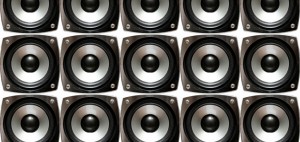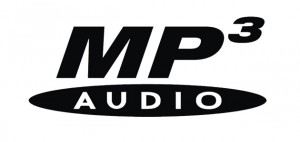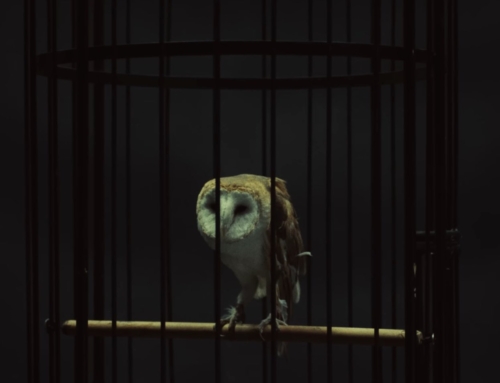 Deciding how important it is to keep your bitrates under control will be much easier if we brush up a little bit on the technical side of things. An MP3 is compressed audio, and the compression is achieved by chopping out the sounds we can’t, or don’t, hear – frequencies too high or too low; sounds that occur at the same time as others that are much louder, or that coincide with one of the key frequencies that our ears are especially well tuned to hear. A 44.1kbps MP3 is one-tenth the size of the uncompressed WAV or AIFF file that it’s derived from – so the benefits are significant.
Deciding how important it is to keep your bitrates under control will be much easier if we brush up a little bit on the technical side of things. An MP3 is compressed audio, and the compression is achieved by chopping out the sounds we can’t, or don’t, hear – frequencies too high or too low; sounds that occur at the same time as others that are much louder, or that coincide with one of the key frequencies that our ears are especially well tuned to hear. A 44.1kbps MP3 is one-tenth the size of the uncompressed WAV or AIFF file that it’s derived from – so the benefits are significant.
The sacrifice is sound quality. A good sound system, or good headphones, will make an MP3 encoded at even a moderate bitrate sound atrocious, because you’ll hear the artefacts that are left over when you start removing frequencies from a natural sound. The lower the bitrate, the more material you’re chopping out, and the more offensive the artefacts. So how important is it to get on top of the bitrates in your own virtual crate, before you take to the stage?
There are two basic schools of thought on this: one says that it’s absolutely vital and that in fact, we’re only using MP3s grudgingly at all: vinyl can never be beaten. These are your audiophiles; they’re the ones who can’t help but critique the club’s sound system and insist that production value is one of the key characteristics of good music. And it really does go a long way to defining the sound of many genres, so they have a valid point.
The other school is more moderate and while they’ll prefer a 320kbps MP3 to a lesser one, they’re more prepared to juggle the close-enough audio quality with the much more manageable file size. Also, the higher the bitrate, the more bandwidth you’ll need to push all that data between your devices, without stuttering and latency problems. As the market takes on more and more inexpensive plastic DJ tools for the home hobbyist, this becomes something worth keeping in the back of your mind next time you rip a CD.

There are two other criteria I’ll point out. One is the venue, and the crowd you’re expecting to play to. Nobody’s going to complain if you drop a 192kbps track at a cruisy kick-on at your friend’s house – but try slipping a 128kbps track in a club known for its aural clarity and you’ll find resident audiophiles leaving less than flattering reviews for you the day after, regardless of your otherworldly technical skillz.
It also depends on the music you’re playing. House and trance-based genres have a real element of audiophilia, and the trainsspotters and fanboys will take offence if you mess around with that. The finesse and mastery that’s gone into the production is half the point, and you’ll show yourself to be ignorant or worse, disrespectful, if you refuse it the room it needs to breathe.
On the other hand, styles that contain a lot of organic sounds (not including those pristine trance vocals), like electro and grungy Boards of Canada-style ambient, can contain so much noise that your audience is likely to be much more forgiving.
One last thing: a song by Jan Driver, called Ladies Want It springs to mind. It has awfully low bitrate rap vocals, chock-full of the repugnant crunchy artefacts that purists rail against, and no cleaner version was ever released – but the song is so catchy that it made it into Ministry of Sound’s 2004 Annual, anyway. Which goes to show: the single most important thing is, and always will be, musicality. Whether bitrates come in a close second, or fifth or nineteenth, is up to you. Tell us what you think in the comments!




